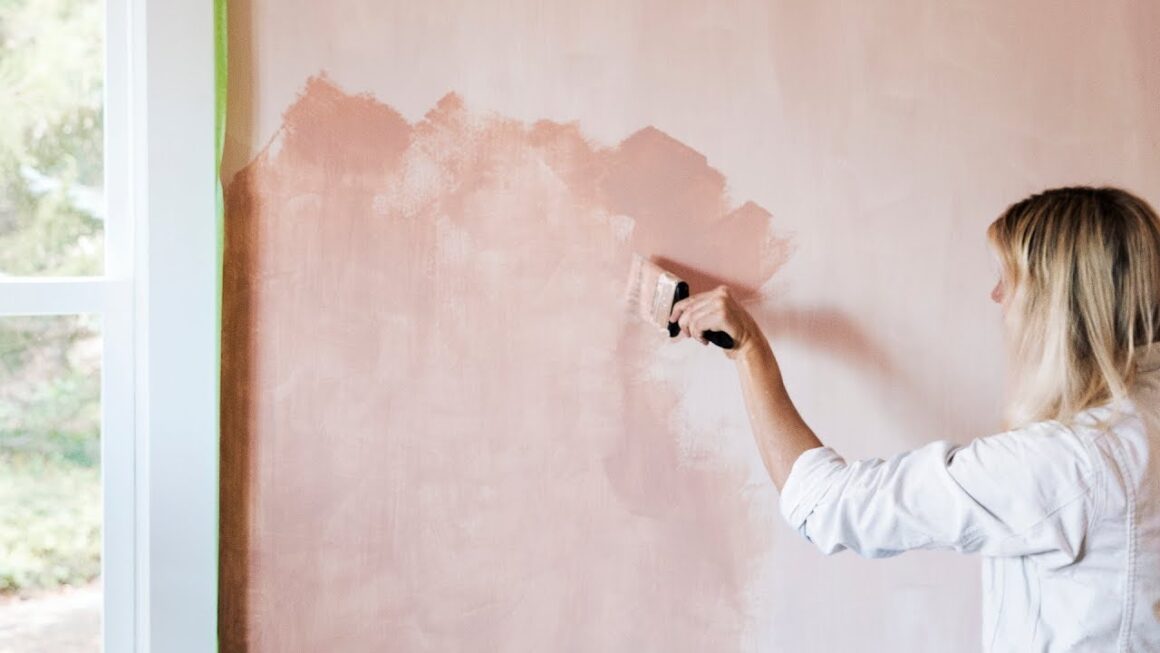This blog has been created to provide the reader with details on the different types of flooring, the application techniques to install them, and the advantages of doing so.
Epoxy flooring is a great and durable material for covering and protecting concrete and wood floors The process of applying epoxy flooring is simple and straight forward, and the finished floor transitions beautifully from concrete to wood. The versatility and lower cost of epoxy flooring is one of the main reasons it is such a popular choice for many people.
Flooring is an essential part of any home. Whether it’s the covering of your fireplace, the floor you walk on, or the flooring in your bathroom, flooring is an important part of your overall home. Perhaps you’ve been looking at flooring options for your home, but aren’t sure which type of flooring is right for your home. In this blog post, I’ll cover the different types of flooring, the different materials flooring is made of, and how to properly apply your flooring.
Here we share our epoxy floor over tiles guide including what is, what to consider, types of coatings, and how to apply it on tiled shower floors. <img ” src=”https://imagegod.b-cdn.net/wp-content/uploads/2021/08/Epoxy-Floor-Over-Tiles-Types-Application-Guide.jpg” alt=”Epoxy-Floor-Over-Tiles-Types-Application-Guide” style=”display:none”> Tile flooring options are rich with beautiful designs of varying textures, patterns, and colors. Yet despite their versatility, some tiles are more fragile and susceptible to collecting dirt. They also need constant resealing for grouts.
The epoxy floor has arrived. If you’re planning a renovation, you may want to consider installing an epoxy floor. An epoxy floor is a smooth, long-lasting, and low-cost flooring option that enables you to create whatever pattern you choose.
Continue reading to see why this is the finest flooring choice for you.
What Is an Epoxy Floor and How Does It Work?

An epoxy floor is a kind of flooring that consists of an epoxy resin-based composition. Epoxy flooring is more frequently used on concrete and is known for its durability.
Epoxy floors are stain-resistant, scratch-resistant, and simple to keep clean. You’ve probably seen gleaming concrete in garages and other industrial settings.
Because these concrete floors are prone to severe wear and tear, an epoxy coating has been applied to them. The epoxy floor is becoming increasingly popular in homes, despite its popularity as a commercial flooring choice.
It’s not hard to see why. Epoxy, like the one from Epodex, is a versatile and long-lasting covering. It may be used on any surface, including wood, concrete, laminate, and metal, and it should last at least ten years.
Epoxy floors are simple to maintain, requiring just daily sweeping, spot cleaning, and light brushing when pigmented. For supplies and installation, homeowners should expect to pay $3 to $7 per square foot on average. More information about epoxy flooring vs. polished concrete may be found in our guide. Be sure to check out Policrete for more information about epoxy flooring.
Is Epoxy Adhesive Safe to Use Over Tile?
When replacing your floor, it’s essential to remove all of the old material. As a result, you’ll have a cleaner blank canvas to work with. However, this procedure may be inconvenient and time-consuming.
The verdict is still out on whether or not epoxy should be applied over tiles. It is, nevertheless, conceivable. The kind and quality of the surface are the most important factors. Here’s a link to our guide on the various tile shapes.
If you want to use it on tiles, you’ll need to perform a lot of prep work beforehand.
Examine the tiles for any damage
 Because of the continuous traffic that floors get, they are prone to damage, therefore inspect the state of your tiles before applying the epoxy. Before beginning the treatment, patch any holes, cracks, or water damage.
Because of the continuous traffic that floors get, they are prone to damage, therefore inspect the state of your tiles before applying the epoxy. Before beginning the treatment, patch any holes, cracks, or water damage.
Moisture is your adversary, particularly in wet and humid environments. Moisture trapped under the tiles will cause the tiles to lift and shatter. On your smooth epoxy floor, that’s not a good appearance.
If your tiles are too old and worn to be repaired, consider having them removed. Remember to get advice from a professional to determine whether or not an epoxy floor may be installed over tiles.
Tiles should be cleaned and sanded
 Make sure your floor tiles are free of oil and grime. This is particularly essential when it comes to garage and kitchen floor tiles. When epoxy is applied to an oily floor, it will leave a spotty finish.
Make sure your floor tiles are free of oil and grime. This is particularly essential when it comes to garage and kitchen floor tiles. When epoxy is applied to an oily floor, it will leave a spotty finish.
Remove the topcoat and sand the tiles. For beauty and protection, tiles include a lot of chemicals. Some have a shiny surface, making it difficult for the epoxy to adhere.
Level the Ground
 Grout is used to join tiles together. Unfortunately, establishing a smooth and level foundation for the epoxy is difficult with these tile grouts.
Grout is used to join tiles together. Unfortunately, establishing a smooth and level foundation for the epoxy is difficult with these tile grouts.
Fill the grouts using an epoxy-based filler coat in such instances. Epoxy will simply accentuate the faults of an uneven and broken surface.
Apply a coat of primer to the floor.
Priming may take hours, depending on the size of the floor you’re working on. However, doing so before applying an epoxy finish extends the life of the floor. It also helps to keep the epoxy layer from cracking or peeling over time.
The primer penetrates the foundation, making it easier for the epoxy to cover the floor. Use a low-viscosity epoxy primer as a primer because it prevents moisture from penetrating.
Epoxy Coatings for Tiles: Different Types
 You’re ready to apply an epoxy coating now that you’ve prepared your foundation. While there are many choices available, here is a list of epoxy coatings that you may use at home to cover your tiles.
You’re ready to apply an epoxy coating now that you’ve prepared your foundation. While there are many choices available, here is a list of epoxy coatings that you may use at home to cover your tiles.
Epoxy with a Metallic Finish
 This epoxy is made up of a mixture of transparent epoxy and metallic components. Metallic epoxy, unlike ordinary epoxy, comes in a variety of swirls and patterns. Rare marbles and other natural stones may be imitated using these patterns.
This epoxy is made up of a mixture of transparent epoxy and metallic components. Metallic epoxy, unlike ordinary epoxy, comes in a variety of swirls and patterns. Rare marbles and other natural stones may be imitated using these patterns.
Choose from hundreds of colours to mix and unleash your inner artist. The three-dimensional appearance creates a captivating floor pattern. The cost of a metallic epoxy coating may range from $4.50 to $15 per square foot.
Terrazzo Epoxy
 Terrazzo is a luxury cement-based material that has been used for millennia. Epoxy terrazzo, a cement-free alternative to terrazzo, first appeared on the market in the 1970s. It has since grown in popularity as a result of its visual appeal and durability at a fraction of the cost.
Terrazzo is a luxury cement-based material that has been used for millennia. Epoxy terrazzo, a cement-free alternative to terrazzo, first appeared on the market in the 1970s. It has since grown in popularity as a result of its visual appeal and durability at a fraction of the cost.
Epoxy terrazzo comes in a variety of bright colors and particles. Because epoxy terrazzo is thin-set, it cannot withstand UV radiation like cement terrazzo. As a result, it’s an excellent coat for wearing inside.
Epoxy terrazzo offers your house a classy appearance without breaking the budget, with installation costing about $15 per square foot.
Coating using Epoxy-Flakes
 Epoxy-flake coating mixes ornamental flakes with transparent epoxy, as the name implies. Colorful patterns, textures, and motifs resembling granite and quartz emerge from this mix. The epoxy-flake coating offers a non-slip solution in addition to its attractive appearance.
Epoxy-flake coating mixes ornamental flakes with transparent epoxy, as the name implies. Colorful patterns, textures, and motifs resembling granite and quartz emerge from this mix. The epoxy-flake coating offers a non-slip solution in addition to its attractive appearance.
Epoxy flakes may be purchased for $6 to $16 per pound to be blended with the epoxy. Here’s where you can learn more about our epoxy flooring guide.
Is It Possible to Epoxy Over Shower Floor Tiles?
 When searching for a water-resistant material, an epoxy floor is a fantastic choice. It thrives in humid and moist environments, such as toilets. However, since it is also non-porous, one major issue is how slippery it may become when wet.
When searching for a water-resistant material, an epoxy floor is a fantastic choice. It thrives in humid and moist environments, such as toilets. However, since it is also non-porous, one major issue is how slippery it may become when wet.
The good news is that an epoxy floor may be customized to meet your specific requirements. Mixing anti-slip chemicals is one way to prevent accidents.
Additives such as fine silica sand and aluminum oxide may be purchased, but they should be used with care since they can be harsh on the skin. For the bathroom, the best option is to combine polymer grit with epoxy coating.
Epoxy coating is not compatible with all shower floor tiles. It all depends on the kind of floor you have and how well it is maintained.
Because shower floors are always wet, moisture may develop underneath the tiles. Finally, it’s important to have a flooring expert examine your floor before deciding whether or not an epoxy floor is the best option. On this page, you can find more relevant information in our post about mosaic tiles for shower floors.
Whether you’re replacing old tiles or just adding a new look to your kitchen or bathroom floor, consider installing epoxy flooring over your old tiles. Especially in bathrooms and kitchens, this is a beautiful and durable option for your floor.. Read more about epoxy over tile before and after and let us know what you think.
Frequently Asked Questions
Can epoxy flooring be applied over tiles?
Yes, epoxy flooring can be applied over tiles.
Can you resin over tiles?
Yes, you can use resin to cover up tiles.
What is the best flooring to cover ceramic tiles?
Ceramic tiles are a type of tile that is made from clay, which can be difficult to cover. However, there are many options for flooring that will work well with ceramic tiles. Some popular choices include hardwood and laminate flooring.


